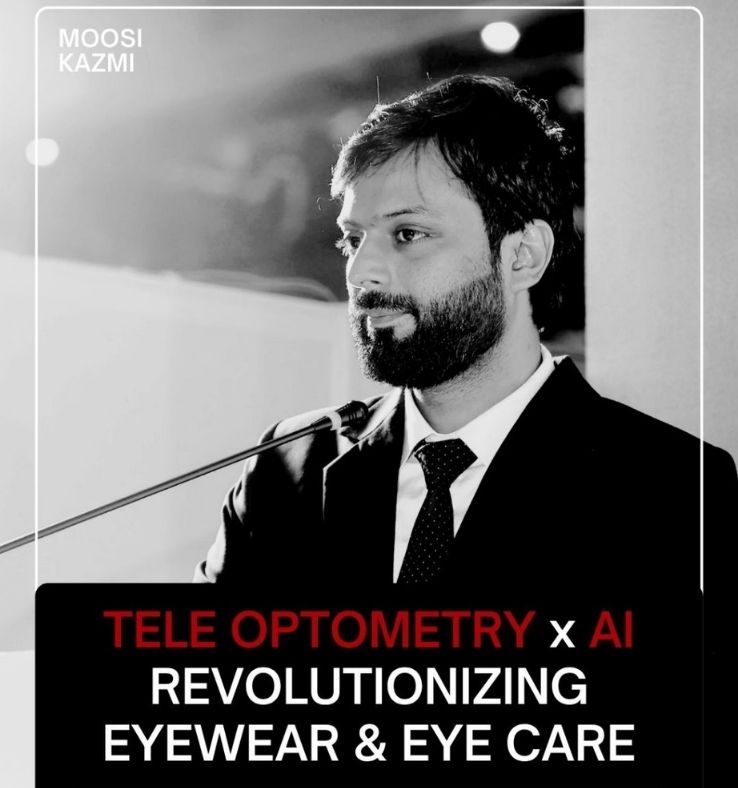OPTICIAN INDIA interviews Dr.Narendra Kumar based on his book 'OPHTHALMIC DISPENSING OPTICS' .
.jpg)
Q. Your LinkedIn page says that you started and have been an Editor at Optometry Today since 1970. What inspired you to dive so deep in this subject?
A. I started my career after completing my diploma in Optometry in 1962. I started working at Sir Ganga Ram Hospital in Delhi. While working there I also completed a five year degree course in Ayurvedic medicine. At that time, a few of us started the Indian Optometric Associations. We wanted to spread knowledge to the Optometrist community so we started the Indian Journal of Optometry. As the office bearers changed with the new election they found it difficult to run the journal given the lack of finances. So, as a challenge I started Optometry Today way back in the 1970s and haven’t stopped since.
Q.Can you tell me about the book?
A. The book focuses on the anatomy and the physiology of the eye. We have covered everything in the book mainly meant for dispensing opticians but it is also very useful for optometrists and ophthalmologists. For optometrists in reviewing and refreshing their knowledge and for ophthalmologists because they need optometrists as their ophthalmic assistants. What's Interesting is that I was offered Rs 10,000 for writing this book and the DOA office bearer wanted the copyright which I didn’t agree to, so the book was published by Optometry. Today, and now it is like my baby.
Q. This is a question for our readers, what are the most important factors one should consider when helping a customer choose eyewear?
A. In the course of my practice as an optometrist, I have gained that the first and foremost step is to select a frame that is not too big and not too small so that proper centration is possible; we find that the frames worn by our patients are generally too big and that hampers the placement of optical centers. Optical centers should coincide with the center of the pupil of the eye. While it is a trend to wear big frames nowadays, to cater that the lens size (diameter) should be larger.
Q. As primary eye care practitioners, optometrists have to play a vital role in detecting potentially serious eye diseases. How deep does this book discuss this notion?
A. As I said this book is meant for dispensing opticians, I am of the opinion that the ophthalmologist can cater better to the quality of detecting and treating eye problems whether medically or surgically. Now some part of these duties is being delegated to the optometrists.
The dispensing optician in my view should concentrate on the selection of the frame and educate patients about different types of lenses, different types of coatings and selection of frame not only in terms of face size but should be having very good fitting, especially the length at the temple should be proper. Curve of the ear tip is important and so is the nasal bridge that corresponds to the nose tip size of the patient so that the frame fits snuggly on the face and doesn’t slide down the nose.
Another advice he/she can convey to the patient is to not to slide the glasses down the nose to see from above it.
 |
Q. What are the challenges faced by dispensing opticians in current days?
A. Probably, there is some challenge he/she faces from the online availability of spectacles. Though I am not condemning this aspect of the eyewear business, it's more than terming spectacles as a commodity as spectacles are a medical product.
For eg: in case of squint we do refraction under a cycloplegic agent that dilates the eyes, paralyzes the accommodation and sometimes in some cases we have to prescribe the full refraction finding in order to correct the squinting eye. Sometimes, what happens is that the patient is carrying the full prescription which has been thoughtfully given with more power based on the findings of cycloplegic refraction and the dispensing optician coaxes in the mind of the patient that the prescription they are carrying is wrong and they can compare which is correct.
Although the lesser power may feel right to the patient, the one with higher power should be dispensed based on the prescription for proper treatment.
Q. Are you planning to write more about the ways of training an Optometrist in Ophthalmic dispensing? What can we expect in the future?
A. At my age of 80 years, I am not taking any new assignments but right now I have started working on a research paper on management of ptosis (drooping of the upper eyelids), with specially formulated scleral contact lenses.
Besides this, I have been writing the editorials in Optometrist Today and I have been writing for two British journals too.

.jpg)

.jpg)
.jpg)
.jpg)


1.jpg)



.jpg)
.jpg)



_(Instagram_Post).jpg)
.jpg)
_(1080_x_1080_px).jpg)


with_UP_Cabinet_Minister_Sh_Nand_Gopal_Gupta_at_OpticsFair_demonstrating_Refraction.jpg)
with_UP_Cabinet_Minister_Sh_Nand_Gopal_Gupta_at_OpticsFair_demonstrating_Refraction_(1).jpg)

.jpg)








.jpg)



.png)




